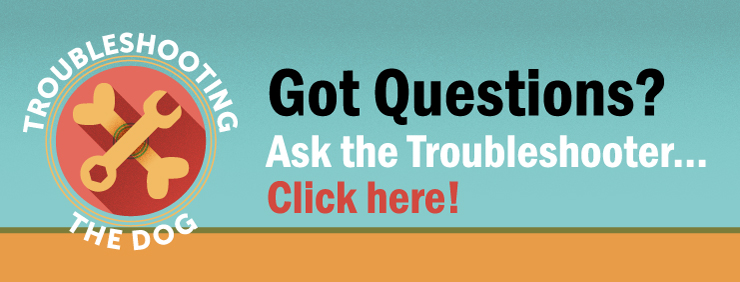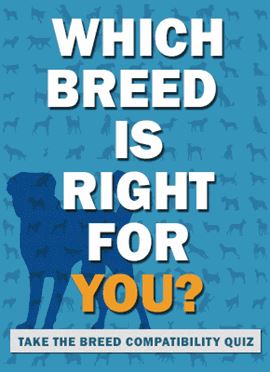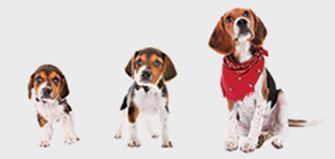
Troubleshooting the Dog: Barking at Other Dogs
Dear Troubleshooter,
My wonderful, excited dog barks at every dog that we pass, whether it’s during our walk or in the car. Not sure if he sees them as a threat and is trying to protect me, or if he is just barking for them to come over to him so he can smell their butts. That’s what dogs do right?? Please help!!
Thanks!
Jumping J
READ THE RESPONSE BELOW
Dear J,
The way a dog interacts with other dogs is the result of a number of complex factors, many of which we don’t fully understand. Some of those factors include breed tendencies, individual biology, excitability, socialization during critical periods, attachment to the owner, and associations made in the dog’s lifetime.
Without taking a full history of your dog and observing him in action, understanding his true motivation with 100-percent certainty is pretty much impossible. However, it is safe to say that often times, especially in socially mature dogs, such barking functions as an attempt by your dog to increase the distance between him and the other canines.
This behavior often begins early when the dog is an excitable puppy or a young canine. He will bark in excitement and anticipation at the sight of another dog, and he will often try to approach the other dog and handler by pulling and lunging. However, approaching head on, quickly, and directly while barking is not a friendly approach or greeting in the dog world, and it is not well-received by the other dog or owner.
Dogs that do not possess the social skills and self-composure to execute a friendly approach are also often not capable of engaging in a friendly greeting or interaction. They will then proceed to excitably fall all over the other dog and owner, or will become overly rigid and use challenging “bully” behaviors, such as standing tall over the other dog, or ignoring the other dog’s signals to cool it. All of this often works toward kicking off a ripple effect of negative consequences for the dog.
In general, the owner can only handle so much barking and pulling, and he or she will start to correct the dog for this behavior. However, the dog rarely makes a connection between the punishment and the undesirable behavior (barking and pulling), and will associate the punishment with what he is focused on at the time—the other dog. Therefore, he will begin barking frantically to ward off the other dog so as to avoid more punishments.
Other dogs will not appreciate overly eager or bullish approach/greeting behaviors, so when they finally do get to interact with a dog that is exhibiting those behaviors, the interaction usually does not go well. The other dog will elicit a series of warnings that may not be understood or heeded, resulting in a growl, a bite, or even a fight. When this happens, the dog may then begin barking at other dogs to ward them off to avoid a fight. Some dogs will respond by barking and lunging to initiate the fight. Either way, the barking and lunging behavior is a real problem.
According to Steven R. Lindsay, who literally wrote the (text) book on dog behavior and training, “the interaction between friendly familiars consists of transactions that evoke feelings of comfort and safety and mutual autonomic attunement while promoting secure attachments.” This is all to say that if the dog were intending to be friendly, he would most likely use friendlier behaviors instead of behaviors he knows are unfriendly (barking). It’s safe to say that regardless of your dog’s motivation, the behavior is menacing and unpleasant. You, your dog, and the other dogs and owners you both encounter will be better off if it is corrected.
The behavior is often a precursor to what is known as reactivity, or over-reactivity, in dogs, which occurs when a dog reacts, or overreacts, to a trigger with a behavior that is determined to be inappropriate. The solution to this issue is a bit more complex and more involved than simply teaching a dog to sit (but sitting does help in impulse control).
Because it COULD be a precursor to more aggressive behavior, either by your own dog or from other dogs reacting to your dog’s reactivity, we always urge you to seek out advice and guidance from a behavioral professional. Some of our favorite professional behavioral resources on this subject include Patricia McConnel’s blog article; the late, great Sophia Yin’s blog articles ; and Scaredy Dog!, a book from reactivity guru Ali Brown. These offer comprehensive information on reactivity, as well as what owners can do to work through the issues with their dogs.
Give them a read and let us know how these tips work for you and your dog!
The Troubleshooter











 Affiliate Clubs
Affiliate Clubs




